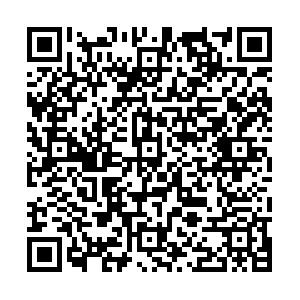On the Legal Dogmatics of the Coherence of Evidence between Supervision Law and Criminal Procedure LawCentered on the Regulations on the Implementation of the Supervision Law
-
摘要: 为准确理解职务犯罪案件证据的衔接与适用,需要运用法解释学的方法对该条例加以检视,《监察法实施条例》的出台标志两法在证据衔接上迈向新的台阶。进行解释前,应当明确主观论的法解释学立场。《监察法实施条例》在证据衔接上有其自洽的逻辑体系,具体而言,包括三种类型:证据准入规范类型、证据取得规范类型以及证据排除规范类型。证据准入规范涵盖的证据种类均可进入刑事诉讼作为证据使用,其中第六十九条的规定创设了双向衔接规范;证据取得规范不包含证明标准规则;证据取得规范从积极方面规定了证据收集、取得方法应当“对标”刑诉法;证据排除规范则从消极方面规定了非法证据排除规则。监察人员以非法方法取得的供述在刑事诉讼中应当排除。Abstract: The introduction of the Regulations on the Implementation of the Supervision Law marks a new step in the evidence coherence of the criminal procedure law and supervision law. In order to accurately understand the coherence and application of evidence in duty-related crime cases, it needs to adopt the method of legal dogmatics. Before the work of interpretation starts, the subjectivism of legal dogmatics should be upheld. The Regulations on the Implementation of the Supervision Law has its own logical system in evidence coherence. Specifically, there are three types of norms: the type of norms of access to evidence, the type of norms of obtaining evidence, and the type of norms of excluding evidence. The types of evidence which belong to the norms of access to evidence can be used as evidence in criminal procedure. Article 69 of the Regulations on the Implementation of the Supervision Law creates a bidirectional rule of evidence coherence. The norms of obtaining evidence do not contain the rules on standards of proof but provide a positive way that the methods of collecting and acquiring evidence should accord with the criminal procedure law. In addition, the norms of excluding evidence provide a negative way for the exclusion of illegal evidence. Confessions obtained with illegal methods by supervisors should be excluded in criminal procedure.
-
Key words:
- coherence of evidence /
- subjectivism /
- access to evidence /
- obtaining evidence /
- excluding evidence
-
[1] 陈光中,邵俊. 我国监察体制改革若干问题思考[J]. 中国法学,2017(4):23-36. [2] 朱孝清. 国家监察体制改革后检察制度的巩固与发展[J]. 法学研究,2018,40(4):3-19. [3] 卞建林. 配合与制约:监察调查与刑事诉讼的衔接[J]. 法商研究,2019,36(1):15-22. [4] 魏昌东. 监督职能是国家监察委员会的第一职能:理论逻辑与实现路径−兼论中国特色监察监督系统的规范性创建[J]. 法学论坛,2019,34(1):25-36. [5] 魏德士. 法理学[M]. 丁晓春, 吴越, 译. 北京: 法律出版社, 2013. [6] 博登海默. 法理学: 法律哲学与法律方法[M]. 邓正来, 译. 北京: 中国政法大学出版社, 2017. [7] 焦宝乾. 历史解释与目的解释的区分难题及其破解[J]. 法商研究,2021,38(5):74-87. [8] 张明楷. 刑法学[M]. 北京: 法律出版社, 2021. [9] 杨仁寿. 法学方法论[M]. 北京: 中国政法大学出版社, 2013. [10] 拉伦茨. 法学方法论[M]. 陈爱娥, 译. 北京: 商务印书馆, 2003. [11] 李勇. 《监察法》与《刑事诉讼法》衔接问题研究−“程序二元、证据一体”理论模型之提出[J]. 证据科学,2018,26(5):563-576. [12] 朱孝清. 刑事诉讼法与监察法衔接中的若干争议问题[J]. 中国刑事法杂志,2021(1):3-16. [13] 张硕. 监察案件非法证据排除制度体系:法理解构与实践路径[J]. 政法论坛,2020,38(6):115-126. [14] 冯俊伟. 《监察法》实施中的证据衔接问题[J]. 行政法学研究,2019(6):85-95. [15] 姚莉. 《监察法》第33条之法教义学解释−以法法衔接为中心[J]. 法学,2021(1):64-77. [16] 施鹏鹏. 证据法[M]. 北京: 中国政法大学出版社, 2020. [17] 汪海燕. 审判中心与监察体制改革−以证据制度为视角[J]. 新疆社会科学,2018(3):118-124. [18] 易延友. 刑事诉讼法: 规则 原理 应用[M]. 北京: 法律出版社, 2019. [19] 熊晓彪. 刑事证据标准与证明标准之异同[J]. 法学研究,2019,41(4):191-208. [20] 董坤. 监察与司法衔接中的证据问题研究[J]. 西南民族大学学报(人文社会科学版),2021,42(7):117-125. doi: 10.3969/j.issn.1004-3926.2021.07.015 [21] 雷磊. 法律规则的逻辑结构[J]. 法学研究,2013,35(1):66-86. [22] 陈卫东,简乐伟. 提起公诉的证据标准问题研究[J]. 河南社会科学,2010,18(1):83-88. doi: 10.3969/j.issn.1007-905X.2010.01.022 [23] 赵飞龙. 非法口供的比较与述评[J]. 北京科技大学学报(社会科学版),2019,35(6):96-102. doi: 10.3969/j.issn.1008-2689.2019.06.012 [24] 孙国祥. 监察对象的刑法主体身份辨析[J]. 法学,2019(9):3-14. [25] 刘艳红. 职务犯罪案件非法证据的审查与排除−以《监察法》与《刑事诉讼法》之衔接为背景[J]. 法学评论,2019,37(1):172-183. -

 点击查看大图
点击查看大图
计量
- 文章访问数: 686
- HTML全文浏览量: 308
- PDF下载量: 69
- 被引次数: 0



 下载:
下载:
